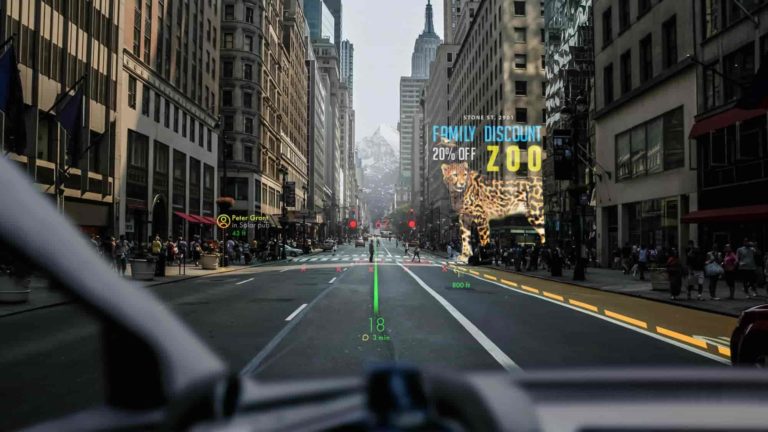
As we roll into 2022, it’s time for our annual ritual of synthesizing the lessons from recent history and formulating the outlook for the near term. The past year has been action-packed for spatial computing as the world gradually emerges from the grips of a pandemic.
The past year was also marked by the emergence of metaverse mania. Though it has legitimate principles and promise, the term has been ambiguated through overuse. It’s also been overhyped in terms of the timing of its arrival. A fully-actualized metaverse is decades away.
Beyond the metaverse, AR and VR continue to be defined by steady progress in several areas. We’re talking mobile AR engagement & monetization; AR marketing and commerce; continued R&D in AR glasses; enterprise adoption; and the gradual march of consumer VR.
So where is spatial computing now, and where is it headed? What’s the trajectory of the above subsegments? This was the topic of a report from our research arm, ARtillery Intelligence. Entitled Spatial Computing: 2021 Lessons; 2022 Outlook, it joins our report excerpt series.
Make the World Clickable
Picking up where we left off in last week’s disussion of a “real-world metaverse,” the concept is aligned with a guiding principle for AR’s future: the AR cloud. This is a conceptual framework in which data is anchored to the inhabitable earth to enable AR devices to trigger relevant content.
Another way to view the AR cloud – framed in today’s technology – is an architecture or index that makes the physical world clickable. Technically, things won’t be clicked per se, but they’ll be activated in some way as AR graphics or informational overlays that come to life around us.
As background for those unfamiliar, AR devices must understand a scene and localize themselves before they can integrate AR graphics believably. That happens with a combination of mapping the contours of a scene (LiDAR will help), and tapping into previously-mapped spatial data.
That data could be a source of value, hence the tech-giant land grab noted last week. And it could be structured in content layers that AR devices reveal in intent-based ways. View the Instagram layer for geo-tagged stories from friends, and the Pinterest layer to discover new products.
These layers will fulfill various functions. Google could be the knowledge layer, Facebook could be the social layer, Microsoft the enterprise productivity layer, and Amazon the commerce layer. Apple will be a hardware powerhouse to represent the user touchpoint to all layers.
The pattern here is that each company’s spatial-web ambitions will mirror its core competency. Put another way, each is motivated to future-proof its core business. So each player’s “version” of the AR cloud will trace back to – and pave a future path for – its core business.
And several gaps will open. Beyond geo-anchored data and AR to render it meaningfully, we’ll need filtration systems. This will involve AI so that content is refined and personalized rather than overwhelming. This and several other components will develop in the coming years.
Killing It
What will be the killer apps of a “real-world metaverse?” We’re bullish on visual search – everything from identifying items with your camera to navigating a new neighborhood. But like many historical technologies, killer apps take years to materialize (think: Uber on smartphones).
One likely trait of AR cloud killer apps will be to elevate or improve activities we already perform. This not only resonates with consumers but it’s less of a logical leap or education process for habit-bound users. In that sense, emerging tech tends to do well when it builds on the familiar.
Examples so far include Pokémon Go’s utilization of AR to enhance mobile gaming. Snapchat lenses meanwhile bring color and animation to the already-popular area of social media sharing. This is the AR-as-a-feature approach that gives the technology a set of training wheels.
Killer apps also tend to develop around high-frequency activities. For example, communication is an everyday behavior that has room for AR enhancement (which Snapchat has already done to a degree). Visual search likewise has utility and usage frequency, just like web search.
Finally, a key consideration for AR killer apps – as it is with most tech – is privacy. Given the level of personal data revealed through such immersive technology, strategic positioning for AR players will mean nothing without user trust. This will be more challenging for ad-centric companies.
Indeed, privacy awareness has been heightened in the past five years, which could jump into hyperdrive in spatial computing due to its sensory immersion. That will create myriad signals and inputs that reveal consumer intent — everything from biometrics to spatial maps of your bedroom.
We’ll pause there and circle back in the next report excerpt to examine more about the state of spatial computing. Read the full report here…






